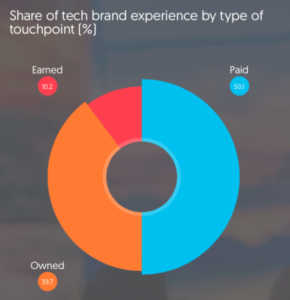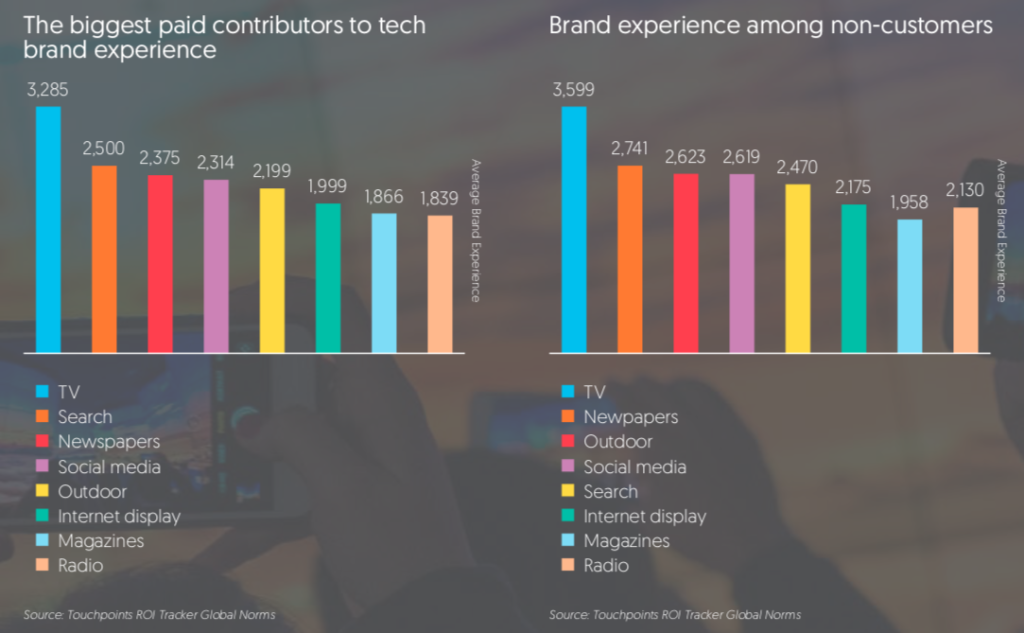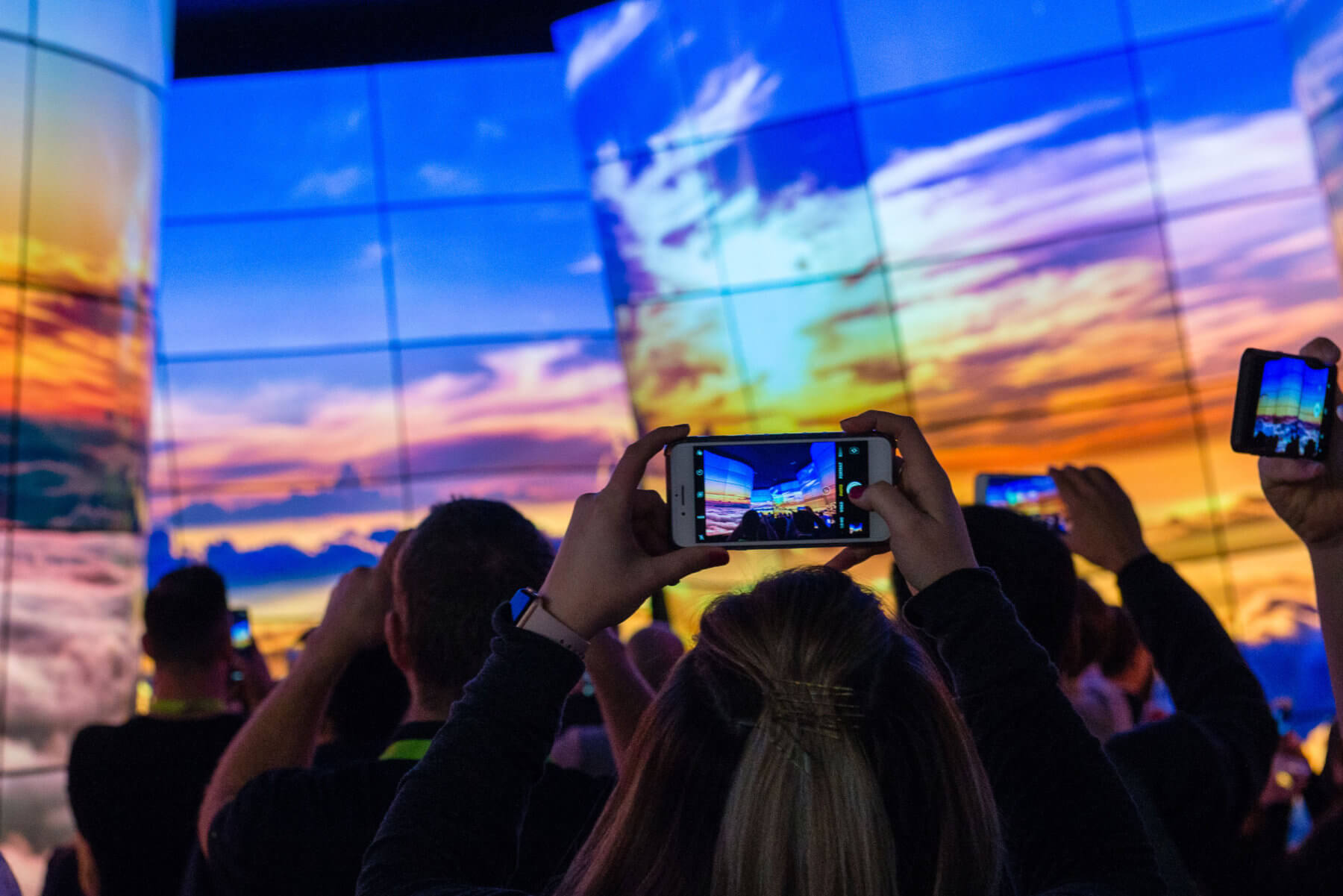Technology is reshaping the world, and fundamentally changing the relationship between brands and consumers. With constant development of new products and services, technology companies need to create rapid and wide awareness of new brands all the time. Ironically, this is best achieved by traditional rather than digital media
The technology industry generates about US$3 trillion in annual revenue, and is growing at about 4% a year. Six of the world’s 100 biggest advertisers are technology companies, with Samsung – the second biggest advertiser – spending about US$10bn a year on advertising. Thanks to their constant cycles of developing, upgrading and replacing new products, technology companies need to inform and educate customers about new brands all the time, while start-ups need to build all their brands from scratch. This is primarily done through advertising in paid media, which is the main way consumers experience technology brands.
We use our Touchpoints ROI Tracker tool to monitor trends in brand communication over the full range of paid, owned and earned touchpoints. One of its outputs is ‘brand experience’, which measures the reported importance of each touchpoint in shaping consumer attitudes and influencing consumer behaviour. As the chart below shows, half of all brand experience in the technology category comes from paid media. Owned media is very important too, providing 40% of brand experience, but getting consumers interested in owned media generally means attracting their attention through paid media in the first place. For new technology brands, then, paid media is absolutely central.

Television is by some distance the biggest contributor to paid-media brand experience in the technology sector – television ads are the most likely to be seen and remembered, and to influence consumer opinions and behaviour. Search comes next, followed by newspapers and social media. However, these are the results across all consumers. Our results show that paid media have very different effects among existing customers than among non-customers – and of course for new brands, just about all potential customers are non-customers.
Television is still the most important channel for recruiting new customers, but online media are notably less effective. Newspapers are in second place, with outdoor advertising in third. Social media is the highest-ranked online channel, in fourth place. Search is relegated from second place across all customers to fifth among non-customers.
Technology companies are clearly aware of the brand building powers of traditional media. Online businesses are now the biggest-spending category on UK television, for example, and spent US$6bn on television advertising in the US last year. If you watched the FIFA World Cup this year you’ll have seen plenty of tech brands in the ad breaks. But having a quantitative measurement of brand experience in the category, and how that changes across the consumer journey, allows technology brands to optimise their budgets across paid media to target potential customers and retain existing customers most effectively.

Based on consumer research, Touchpoints ROI Tracker is Publicis Media’s brand contact measurement and planning tool. Since 2004 a total of 1,145 Touchpoints projects have been completed across 67 countries, comprising 1,011,565 consumer interviews that provide contact point metrics for 15,280 brands in 333 product and service categories. The data for all projects are stored in a single internet-accessible database. This database provides normative and trend data for 293 touchpoints. All rights to the MCA® measurement system including CCF™, BEP™ and BES™ are owned by Integration (Marketing and Communications) Limited and licensed to Publicis Media Limited and its affiliates.
SIGN UP FOR ZENITH INSIGHTS



